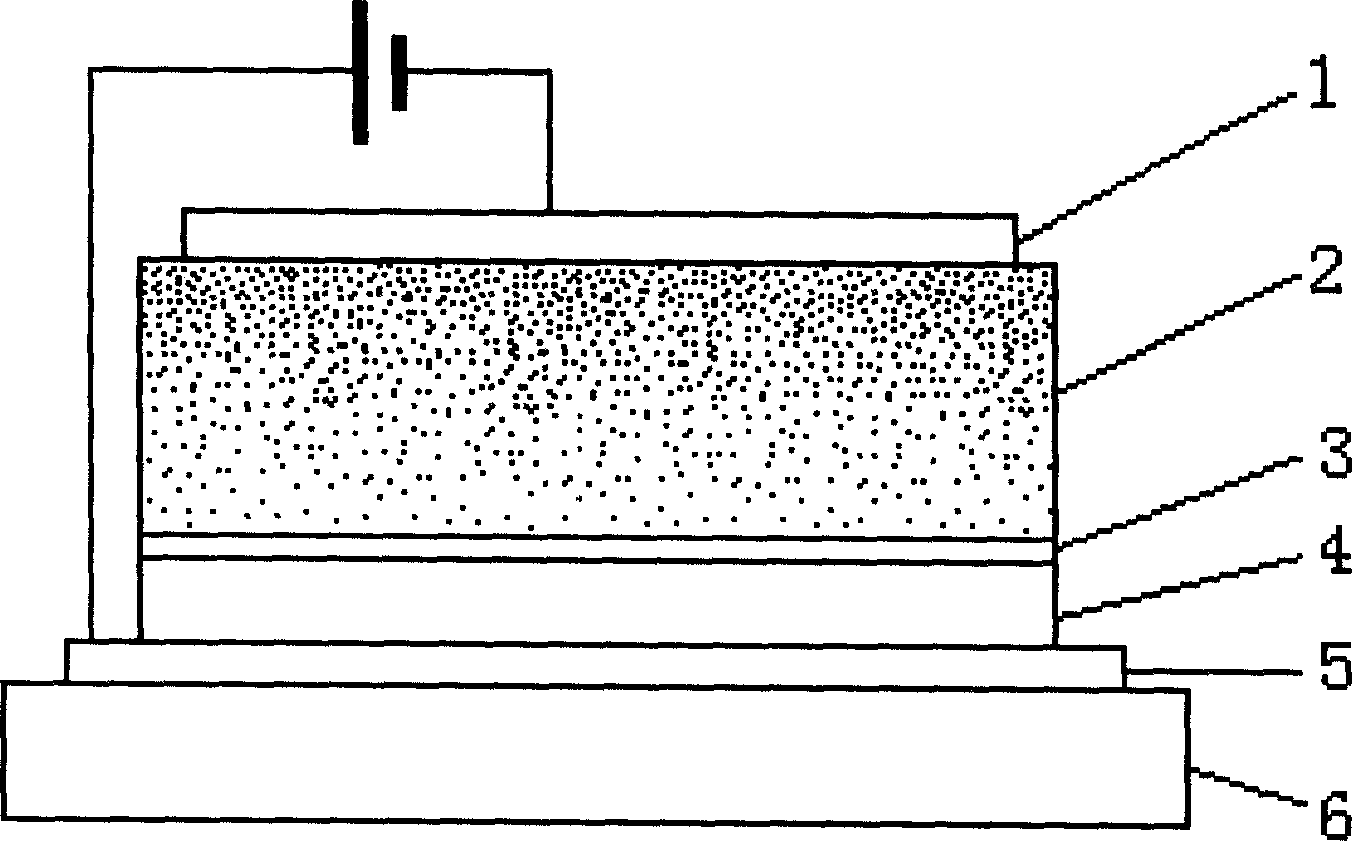Inorganic salt blended organic electroluminescence light emitting display device
An electroluminescence display and inorganic salt technology, applied in the field of organic electroluminescence display devices, can solve the problems of unbalanced carrier injection, difficulty in injecting electrons, etc., so as to improve the efficiency of electron injection, save production costs, and increase the probability of Effect
- Summary
- Abstract
- Description
- Claims
- Application Information
AI Technical Summary
Problems solved by technology
Method used
Image
Examples
Embodiment Construction
[0010] Below in conjunction with accompanying drawing, the utility model is described in further detail.
[0011] Referring to the accompanying drawings, the present invention includes a glass substrate 6 and an ITO conductive layer 5, a hole transport layer 4, a lower light-emitting layer 3, an upper light-emitting layer 2 and a metal cathode 1 that are sequentially arranged on the upper surface of the glass substrate 6 from bottom to top, wherein , the ITO conductive layer 5 and the metal cathode 1 are respectively connected to the positive and negative electrodes of the DC voltage, the upper light-emitting layer 2 is doped with lithium fluoride LiF or lithium bromide LiBr inorganic salt material, and the inorganic salt material near the metal cathode 1 is connected to the luminescent The maximum molar doping ratio of the material is less than 80%, and the doping gradient decreases downward according to 2% / nanometer.
[0012] In organic electroluminescent display devices, or...
PUM
 Login to View More
Login to View More Abstract
Description
Claims
Application Information
 Login to View More
Login to View More - R&D
- Intellectual Property
- Life Sciences
- Materials
- Tech Scout
- Unparalleled Data Quality
- Higher Quality Content
- 60% Fewer Hallucinations
Browse by: Latest US Patents, China's latest patents, Technical Efficacy Thesaurus, Application Domain, Technology Topic, Popular Technical Reports.
© 2025 PatSnap. All rights reserved.Legal|Privacy policy|Modern Slavery Act Transparency Statement|Sitemap|About US| Contact US: help@patsnap.com

